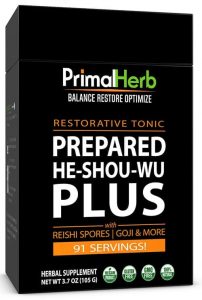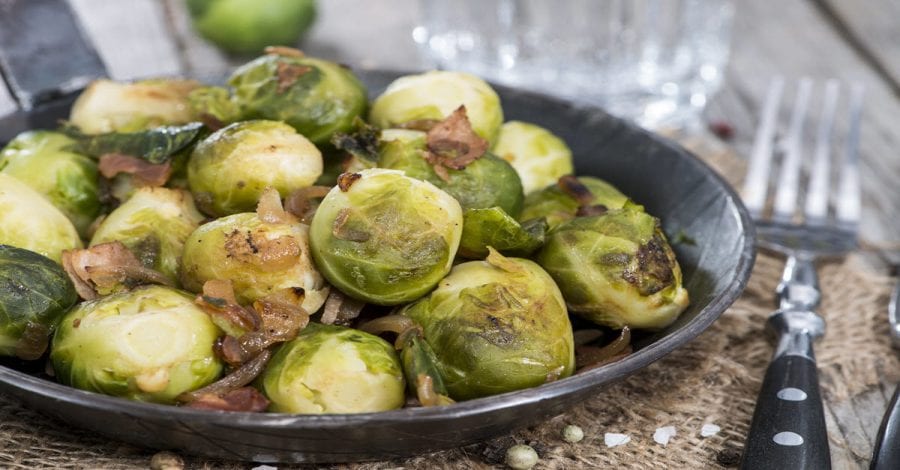Prepared He Shou Wu PLUS Research Review
Prepared He Shou Wu
Lishuang Lv, Yunhui Cheng, Tiesong Zheng, Xiaoming Li, Rong Zhai (2014). Purification, antioxidant activity and antiglycation of polysaccharides from Polygonum multiflorumThunb. Carbohydrate Polymers 99(2) 765-773. Retrieved from https://www.sciencedirect.com/science/article/pii/S0144861713008977
Chen-Chen lee, Yueh-Lun Lee, Chien-N Wang, Hsing-Chuan Tsai, Chung-Lung Chiu, Leroy F. Liu, Hung-Yun Lin, Reen Wu (2016). Polygonum multiflorum Decreases Airway Allergic Symptoms in a Murine Model of Asthma. The American Journal of Chinese Medicine 44(133). Retrieved from https://www.worldscientific.com/doi/abs/10.1142/S0192415X16500099
Bao-Hong Lee, Ya-Yin Huang, She-Ching Wu (2011). Hepatoprotective Activity of Fresh Polygonum multiflorum Against HEP G2 Hepatocarcinoma Cell Proliferation. Journal of Food and Drug Analysis 19(1) 26-32. Retrieved from https://search.proquest.com/openview/3ee82d5b4cead593f26b2c5df7984b7a/1?pq-origsite=gscholar&cbl=906352
Jiabo Wang, Zhijie Ma, Ming Niu, Yun Zhu, Qingsheng Liang, Yanling Zhao, Jingyuan Song, Zhaofang Bai, Yaming Zhang, Ping Zhang, Na Li, Yakun Meng, Qi Li, Lushan Qin, Guangju Teng, Junling Cao, Baosen Li, Shilin Chen, Yonggan Li, Zhengsheng Zou, Honghao Zhou, Xiaohe Xiao (2015). Evidence chain-based causality identification in herb-induced liver injury: exemplification of a well-known liver-restorative herb Polygonum multiflorum. Frontiers of Medicine 9(4) 457-467. Retrieved from https://link.springer.com/article/10.1007/s11684-015-0417-8
Li, F. Cai, Y. Yang, X. Zhao, C. Wang, J. Li, Y. Jia, J. Tang, Q. Liu (2010). Tetrahydroxystilbene glucoside ameliorates diabetic nephropathy in rats: involvement of SIRT1 and TGF-B1 pathway. European Journal of Pharmacology 649(1-3) pp. 382-389. Retrieved from https://www.ncbi.nlm.nih.gov/pubmed/20854812
G.T. Chen, M. Yang, B.B. Chen, Y. Song, W. Zhang, Y. Zhang (2016). 2,3,5,4’-Tetrahydroxystilbene-2-0-B-d-glucoside exerted protective effects on diabetic nephropathy in mice with hyperglycemia induced by streptozotocin. Food & Function 7(11) 4628-4636. Retrieved from https://www.ncbi.nlm.nih.gov/pubmed/27747335
M.C. Kho, Y.J. Lee, J.H. Park, J.D. Cha, K.M. Choi, D.G. Kang, H.S. Lee (2016). Combination with Red ginseng and Polygoni Multiflori ameliorates highfructose diet induced metabolic syndrome. BMC Complementary and Alternative Medicine 16:98. Retrieved from https://www.ncbi.nlm.nih.gov/pubmed/26961224
Xiao Le Xu, Qiu Yan Zhu, Cheng Zao, Fei Wang, Zhong Yin Zhou, Ya E Hu, Wei Zhang (2014). The Effect of 2,3,4’,5-Tetrahydroxystilbene-2-0-B-D-Glucoside on Pressure Overload-Induced Cardiac Remodeling in Rats and Its Possible Mechanism. Planta Medica Vol. 80 pp. 130-138. Retrieved 53( https://www.thieme-connect.com/products/ejournals/abstract/10.1055/s-0033-1360198
Xingjiang Xiong, Xiaochen Yang, Wei Liu, Fuyong Chu, Pengqian Wang, Jie Wang (2013). Trends in the Treatment of Hypertension form the Perspective of Traditional Chinese Medicine. Evidence-Based Complementary and Alternative Medicine Vol. 2013. Retrieved from https://www.hindawi.com/journals/ecam/2013/275279/abs/
Wang, Y. He, P. Lin, Y. Li, R. Sun, W. Gu, J. Yu, R. Zhao (2014). In vitro effects of active components of Polygonum Multiflorum Radix on enzymes involved in the lipid metabolism. Journal of Ethnopharmacology 153(3) 763-770. Retrieved from https://www.ncbi.nlm.nih.gov/pubmed/24680992
Miao Hu, Weiwei Zeng, Brian Tomlinson (2014). Evaluation of a Crataegus-Based Multiherb Formula for Dyslipidemia: A Randomized, Double-Blind, Placebo-Controlled Clinical Trial. Evidence-Based Complementary and Alternative Medicine Vol. 2014. Retrieved from https://www.hindawi.com/journals/ecam/2014/365742/
Soo Vin Lee, Kyung Ha Choi, Young Whan Choi, Jin Woo Hong, Jin Ung Baek, Byung Tae Choi, Hwa Kyoung Shin (2014). Hexane extracts of Polygonum multiflorum improve tissue and functional outcome following focal cerebral ischemia in mice. Molecular Medicine Reports 9(4) 1415-1421. Retrieved from https://www.spandidos-publications.com/mmr/9/4/1415#b24-mmr-09-04-1415
Peng-Yuan Yang, Mohamad Radwan Almofti, Ling Lu, Hui Kang, Jing Zhang, Tie-Jun Li, Yao-Cheng Rui, Lian-Na Sun, Wan-Sheng Chen (2005). Reduction of Atherosclerosis in Cholesterol-Fed Rabbits and Decrease of Expressions of Intracellular Adhesion Molecule-1 and Vascular Endothelial Growth Factor in Foam Cells by a Water-Soluble Fraction of Polygonum multiflorum. Journal of Pharmacological Sciences 99(3) 294-300. Retrieved from https://www.jstage.jst.go.jp/article/jphs/99/3/99_3_294/_article
Xiang, G. Liu, Y.J. Zhou, H.Z. Hao, Z. Yin, A.D. He, X.W. Da, J.Z. Xiang, J.L. Wang, Z.Y. Ming (2014). 2,3,5,4’-tetrahydroxystilbene-2-0-B-D-glucoside (THSG) attenuates human platelet aggregation, secretion and spreading in vitro. Thrombosis Research 133(2) 211-217. Retrieved from https://www.ncbi.nlm.nih.gov/pubmed/24332167
Sun Young Park, Mei Ling Jin, Seon Yeong Chae, Min Jung Ko, Yung Hyun Choi, Geuntae Park, Young-Whan Choi (2016). Novel compound from Polygonum multiflorum inhibits inflammatory response in LPS-stimulated microglia by upregulating AMPK/Nrf2 pathways. Neurochemistry International Vol. 100 pp. 21-29. Retrieved from https://www.sciencedirect.com/science/article/pii/S0197018616302546
S.Y. Lee, S.M. Ahn, Z. Wang, Y.W. Choi, H.K. Shin, B.T. Choi (2017). 2,3,5,4’-tetrahydroxystilbene-2-0-B-D-glucoside from Polygonum multiflorum against glutamate-induced oxidative toxicity in HT22 cells. Journal of Ethnopharmacology 195:64-70. Retrieved from https://www.ncbi.nlm.nih.gov/pubmed/27939422
Zhang, L. Huang, L. Chen, D. Hao, J. Chen (2013). Neuroprotection by tetrahydroxystilbene glucoside in the MPTP mouse model of Parkinson’s disease. Toxicology Letters 222(2) 155-163. Retrieved from https://www.ncbi.nlm.nih.gov/pubmed/23911879/
Qian Wei, Guang Ta, Wenjing He, Wei Wang, Qiucheng Wu (2017). Stilbene Glucoside, a Putative Sleep Promoting Consitituent from Polygonum multiflorum Affects Sleep Homeostasis by Affecting the Activities of Lactate Dehydrogenase and Salivary Alpha Amylase. Chemical and Pharmaceutical Bulletin (2017)11 pp. 1011-1019. Retrieved from https://www.jstage.jst.go.jp/article/cpb/65/11/65_c17-00275/_article/-char/ja/
J.H. Baek, A.A. Nierenberg, G. Kinrys (2014). Clinical applications of herbal medicines for anxiety and insomnia; targeting patients with bipolar disorder. Australian & New Zealand Journal of Psychiatry 48(8) 705-715. Retrieved from https://www.ncbi.nlm.nih.gov/pubmed/24947278/
Ganapathi Narasimhulu, Kesireddy Kathyvevelu Reddy, Jamaludin Mohamed (2014). The Genus Polygonum (Polygonaceae): An Ethnopharmacological and Phytochemical Perspectives – Review. International Journal of Pharmacy and Pharmaceutical Sciences 6(2) 21-45. Retrieved from https://pdfs.semanticscholar.org/a124/3270c84c81ffcbe8247f09593a563bbc092b.pdf
H.W. Lin, M.X. Sun, Y.H. Wang, L.M. Yang, Y.R. Yang, N. Huang, L.J. Suan, Y.M. Xu, D.L. Bai, Y.T. Zheng, K. Xiao (2010). Anti-HIV activities of the compouns isolated from Polygonum cuspidatum and Polygonum multiflorum. Planta Medica 76(9) 889-892. Retrieved from https://www.ncbi.nlm.nih.gov/pubmed/20112182/
H.J. Park, N. Zhang, D.K. Park (2011). Topical application of Polygonum multiflorum extract induces hair growth of resting hair follicles through upregulating Shh and B-catenin expression in C57VL/6 mice. Journal of Ethnopharmacology 135(2) 369-375. Retrieved from https://www.ncbi.nlm.nih.gov/pubmed/21419834
Y.N. Sun, L. Cui, W. Li, X.T. Yan, S.Y. Yang, J.I. Kang, H.K. Kang, Y.H. Kim (2013). Promotion effect constituents from the root of Polygonum multiflorum on hair growth. Bioorganic & Medicinal Chemistry Letters 23(17) 4801-4805. Retrieved from https://www.ncbi.nlm.nih.gov/pubmed/23896496
Y.S. Ma, S.W. Weng, M.W. Lin, C.C. Lu, J.H. Chiang, J.S. Yang, K.C. Lai, J.P. Lin, N.Y. Tang, J.G. Lin, J.G. Chung (2012). Antitumor effects of emodin on LS1034 human colon cancer cells in vitro and in vivo: roles of apoptotic cell death and LS1034 tumor xenografts model. Food and Chemical Toxicology 50(5) 1271-1278. Retrieved from https://www.ncbi.nlm.nih.gov/pubmed/22321733
Hong-Sheng Chen, Yan Liu, Luo-Qiang Lin, Jin-Lu Zhao, Chun-Peng Zhang, Jun-Chao Jin, Lei Wang, Ming-Han Bai, Yi-Chong Wang, Ming Liu, Bao-Zhong Shen (2011). Anti-proliferative effect of an extract of the root of Polygonum multiflorum Thunb. on MCF-7 human breast cancer cells and the possible mechanisms. Molecular Medicine Reports 4(6) 1313-1319. Retrieved from https://www.spandidos-publications.com/mmr/4/6/1313?text=abstract
- Wang, Y. Sun, X. Li, H. Li, Y. Chen, Y. Tian, J. Yi, J. Wang (2011). Emodin potentiates the anticancer effect of cisplatin on gallbladder cancer cells through the generation of reactive oxygen species and the inhibition of survivin expression. Oncology Reports 26(5) 1143-1148. Retrieved from https://www.ncbi.nlm.nih.gov/pubmed/21769433
Reishi
Ke Pan, Qunguang Jiang, Guoqing Liu, Xiongying Miao, Dewu Zhong (2013). Optimization extraction of Ganoderma lucidumpolysaccharides and its immunity and antioxidant activities. International Journal of Biological Macromolecules Vol. 55 pp. 301-306. Retrieved from https://www.sciencedirect.com/science/article/pii/S0141813013000299
Robert M. Levin, Li Xia Wei, Catherine Schuler, Robert E. Leggett, Alpha D.Y. Lin (2017). Effects of Ganoderma Lucidum shell-broken spore on oxidative stress of the rabbit urinary bladder using an in vivo model of ischemia/reperfusion. Molecular and Cellular Biochemistry 1-11. Retrieved https://link.springer.com/article/10.1007/s11010-017-3053-6
Huang S, Mao J, Ding K, et al. Polysaccharides from Ganoderma lucidum Promote Cognitive Function and Neural Progenitor Proliferation in Mouse Model of Alzheimer’s Disease. Stem Cell Reports. 2017;8(1):84-94. [PubMed]
Hai-Bang Tran, Atsushi Yamamoto, Sayaka Matsumoto, Hisatomi Ito, Kentaro Igami, Toshitsugu Miyazaki, Ryuichiro Kondo, Kuniyoshi Shimizu (2014). Hypotensive Effects and Angiotensin-Converting Enzyme Inhibitory Peptides of Reishi (Ganoderma lingzhi) Auto-Digested Extract. Molecules 19(9) 13473-13485. Retrieved from http://www.mdpi.com/1420-3049/19/9/13473
Chang S.S., Zhou D., Meng G.L., Wu F., Wang S, Chen X., Su J.L. (2012). Effect of Ganoderma lucidum polysaccharides on oxidative stress of hyperlipidemic fatty liver in rats. China Journal of Chinese Materia Medica 37(20) 3102-3106. Retrieved from http://europepmc.org/abstract/med/23311162
Deng Pan, Dan Zhang, Jiasheng Wu, Congheng Chen, Zhixue Xu, Hongjie Yang, Ping Zhou (2014). A novel proteoglycan from Ganoderma lucidum fruiting bodies protects kidney function and ameliorates diabetic nephropathy via its antioxidant activity in C57BL/6 db/db mice. Food and Chemical Toxicology Vol. 64 pp. 111-118. Retrieved from https://www.sciencedirect.com/science/article/pii/S0278691513007217
Nathalie M. Delzenne, Laure B. Bindels (2015). Gut microbiota: Ganoderma lucidum, a new prebiotic agent to treat obesity? Nature Reviews Gastroenterology & Hepatology Vol. 12, pp 553-554. Retrieved from https://www.nature.com/articles/nrgastro.2015.137
Chih-Jung Chang, Chuan-Sheng Lin, Chia-Chen Lu, Jan Martel, Yun-Fei Ko, David M. Ojcius, Shun-Fu Tseng, Tsung-Ru Wu, Yi-Yuan Margaret Chen, John D. Young, Hsin-Chih Lai (2015). Ganoderma lucidum reduces obesity in mice by modulating the composition of the gut microbiota. Nature Communications Vol. 6 ID 7489. Retrieved from https://www.nature.com/articles/ncomms8489
Siberian Eleuthero
Aline Arouca, Dora Maria Grassi-Kassisse (2013). Eleutherococcus senticosus: Studies and effects. Health Vol. 5 pp. 1509-1515. Retrieved from http://citeseerx.ist.psu.edu/viewdoc/download?doi=10.1.1.868.9637&rep=rep1&type=pdf
Jip Kuo, Kenny Wen-Chyuan Chen, I-Shiung Cheng, Pu-His Tsai, Ying-Jui Lu, Ning-Yuean Lee (2010). The Effect of Eight Weeks of Supplementation with Eleutherococcus senticosus on Endurance Capacity and Metabolism in Human. Chinese Journal of Physiology 53(2) 105-111. Click Here
Debin Huang, Zehua Hu, Zhaofen Yu (2013). Eleutheroside B or E enhances learning and memory in experimentally aged rats. Neural Regeneration Research 8(12) 1103-1112. Retrieved from https://www.ncbi.nlm.nih.gov/pmc/articles/PMC4145894/
Donghung Lee, Juyeon Park, Jepil Yoon, Mi-Yeon Kim, Ho-Young Choi, Hocheol Kim (2012). Neuroprotective effects of Eleutherococcus senticosus bark on transient global cerebral ischemia in rats. Journal of Ethnopharmacology 139(1) 6-11. Retrieved from https://www.sciencedirect.com/science/article/pii/S0378874111003771
Hyang Rye Won (2012). Effect of Acanthopanax Senticosus Water Extract on Lipid Metabolism in Rats Fed a Hypercholesterol Diet. The Korean Journal of Community Living Science 23(4) 501-508. Retrieved from http://www.koreascience.or.kr/article/ArticleFullRecord.jsp?cn=SHSHCG_2012_v23n4_501
Young-Hyun Kim, Myoung Lae Cho, Dan-Bi Kim, Gi-Hae Shin, Jin-Ha Lee, Jong Seok Lee, Sun-Ok Park, Sang-Jong Lee, Hyun Mu Shin, Ok-Hwan Lee (2015). The Antioxidant Activity and Their Major Antioxidant Compounds from Acanthopanax senticosus and A. koreanum. Molecules 20(7) 13281-13295. Retrieved from https://www.mdpi.com/1420-3049/20/7/13281
Wenjia Li, Qiuxiang Luo, Li Hua Jin (2013). Acanthopanax senticosus extracts have a protective effect on Drosophila gut immunity. Journal of Ethnopharmacology 146(1) 257-263. Retrieved from https://www.sciencedirect.com/science/article/pii/S0378874112008744
Goji berry
You-Chang Oh, Won-Kyung Cho, Ga Young Im, Yun Hee Jeong, Youn-Hwan Hwang, Chun Liang, Jin Yeul Ma (2012). Anti-inflammatory effect of Lycium Fruit water extract on lipopolysaccharide-stimulated RAW 264.7 macrophage cells. International Immunopharmacology 13(2) 181-189. Retrieved from https://www.sciencedirect.com/science/article/pii/S1567576912000938
Quan Liu, Yanqing Li, Li Hu, Dehui Wang (2011). Lycium barbarum Polysaccharides Attenuate Cisplatin-Induced Hair Cell Loss in Rat Cochlear Organotypic Cultures. International Journal of Molecular Science 12(12) 8982-8992. Retrieved from https://www.mdpi.com/1422-0067/12/12/8982
Xiwen Xing, Fenyong Liu, Jia Xiao, Kwok Fai So (2016). Neuro-protective Mechanisms of Lycium barbarum. NeuroMolecular Medicine 18(3) 253-263. Retrieved from https://link.springer.com/article/10.1007/s12017-016-8393-y
Harunobu Amagese, Dwight M. Nance (2011). Lycium barbarum Increases Caloric Expenditure and Decreases Waist Circumference in Healthy Overweight Men and Women: Pilot Study. Journal of the American College of Nutrition 30(5) 304-309. Retrieved from https://www.tandfonline.com/doi/abs/10.1080/07315724.2011.10719973
Xinyu Zhang, Xinping Yang, Yahui Lin, Miaomiao Suo, Ling Gong, Jingzhou Chen, Rutai Hui (2015). Anti-hypertensive effect of Lycium barbarum L. with down-regulated expression of renal endothelial IncRNA sONE in a rat model of salt-sensitive hypertension. International Journal of Clinical & Experimental Pathology 8(6) 6981-6987. Retrieved from https://www.ncbi.nlm.nih.gov/pmc/articles/PMC4525921/
Chiu-Hsieh (Paul) Hsu, Dwight M. Nance, Harunobu Amagese (2012). A Meta-Analysis of Clinical Improvements of General Well-Being by a Standardized Lycium barbarum. Journal of Medicinal Food 15(11) Retrieved from https://www.liebertpub.com/doi/abs/10.1089/jmf.2012.0013
Xiao, E.C. Liong, Y.P. Ching, R.C.C. Chang, M. L. Fung, A.M. Xu, K.F. So, G.L. Tipoe (2013). Lycium barbarum polysaccharides protect rat liver from non-alcoholic steatohepatitis-induced injury. Nutrition & Diabetes 3, e81. Retrieved from https://www.nature.com/articles/nutd201322
Qihan Zhao, Jingjing Li, Jun Yan, Shuai Liu, Yulin Guo, Dajie Chen, Qiong Luo (2016). Lycium barbarum polysaccharides ameliorates renal injury and inflammatory reaction in alloxan-induced diabetic nephropathy rabbits. Life Sciences Vol. 157 pp. 82-90. Retrieved from https://www.sciencedirect.com/science/article/abs/pii/S0024320516303460
Wai-Man Tang, Enoch Chan, Ching-Yee Kwok, Yee-Ki Lee, Jian-Hong Wu, Chun-Wai Wan, Robbie Yat-Kan Chan, Peter Hoi-Fu Yu, Shun-Wan Chan (2012). A review of the anticancer and immunomodulatory effects of Lycium barbarum fruit. Inflammopharmacology 20(6) 307-314. Retrieved from https://link.springer.com/article/10.1007/s10787-011-0107-3
Interested in Prepared He Shou Wu PLUS? Learn More
Recommended
The Benefits of Dietary Fiber are Remarkable
Several research studies are showing a positive correlation between fiber intake and aging. One study conducted over a 10-year span showed that most participants who were meeting daily dietary fiber intake aged gracefully. So what …
He Shou Wu: The Legendary Root of Youth and Vitality
In an ancient Chinese record, a man by the name of He had grown past middle age, his hair had turned gray, and he had been unable to father any children. Taking the advice of …
Life Hacks to Increase Hormone Levels Naturally – Based on The Research
For as long as man has wanted a better body, he’s been looking for a wonder drug that will give it to him. Of course, you know there’s no substitute for hard work and consistency …
- Exclusive Offers
- Product Giveaways
- Latest Research
- New Product Launches








